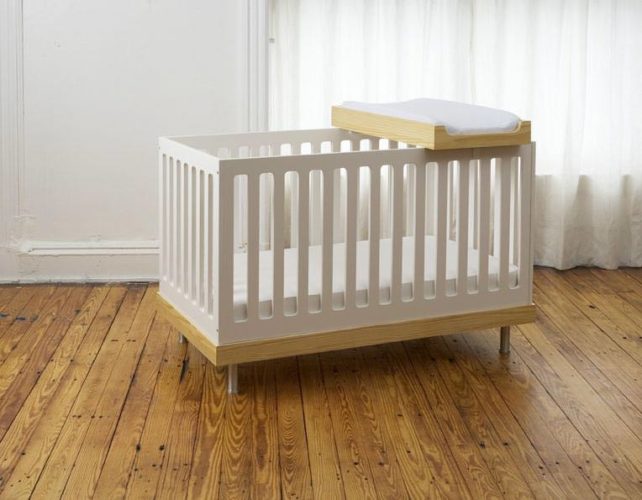How to approach marketing as a drop shipping retailer, including dealing with the essential issue of positioning in a crowded market.
I’m drilling down on this idea of a lifestyle or cash-flow business.
A business that supports your lifestyle.
It’s the only way to go (for the reasons why, read this post).
And today I’m putting my money where my mouth is — my family and I are on a 6+ month trip (current location: St. Barths).

We are about a month in, and there have been some growing pains, but I’m here to say that it’s possible.
You CAN have a highly-automated cash-flow machine business. You CAN choose to live an intentional, fulfilling life.
Obviously, it doesn’t happen overnight, but good business fundamentals will get you there.
What are good business fundamentals?
Well, to recap the last few posts:
- Forget about “branding”, PR, business cards and stuff like that. Your first goal is simple: be able to drive a visitor to your site to buy. Profits first, brand second. More on that here.
- Don’t try to create demand where there isn’t any. Don’t try to create a new product category, social network, or marketplace. Leave that to the VC-backed players with money to burn. Marketing is matching: match a solution to pre-existing (severe!) demand. Read more on that here.
- How do you find this demand? You focus on learning about your market using some dead-simple surveying techniques.
- Once you know what your customers crave, position yourself as the no-brainer solution. Here’s how.
These are basic business fundamentals. You nail them, everything else becomes a lot easier — whether you are starting out or running a 9-figure business.
These fundamentals are powerful

Now — before we move beyond the fundamentals, I want to show you how powerful they are.
Can you use them to better market a commodity product?
Something where tons of competitors exist selling the exact same thing through the exact same channels?
Can you build a lifestyle business THERE?

Yes. Let me tell you a story about when I ran DesignPublic.com, my first business. We were a drop-ship retailer — we didn’t own any product, we just sold various modern design brands.
And anyone else can and did sell these brands if they were willing to shell out a whopping $20 for a Shopify site. There were almost no barriers to entry.
At Design Public, we had this running “Two Moms” joke. It seemed like every one of our competitors was started by Two Moms. You’d go read their About Us pages, and they’d all say “Hi! We’re just Two Moms, and when we had kids we were bummed we couldn’t find cool, modern baby furniture. So we started this business!”
Yup — those were the Two Moms. What the Two Moms didn’t realize was that every time two more of them came along selling the same baby stuff with the same free shipping and 20% off your first order offers as everyone else, they made it harder and harder for the any of us to eek out a profit.
But things could have been different. We could have made money hand over fist if we had nailed the fundamentals first.
This is what a lack of positioning looks like…

Let’s look at a specific product example. Every modern design retailer sells this beautiful baby crib called the Oeuf crib. It is in high demand — parents love the clean lines.
So every Two Moms business today offers the Oeuf Crib. I mean, look at this:
- Design Public
- Half Pint Shop
- 2Modern
- Modern Nursery
- ABC Home
- ModernSeed
- Nini and Loli
- Mini Jake
- LiaPela
- Fawn and Forest
- All Modern
- Babesta
- Giggle
- YLiving
- Aldea Baby
- Pokka Dots
- The Night Light
- Diapers
It would kill the designer to hear this — but today the Oeuf Crib is a commodity. Like salt or oil. The brand (Oeuf) and the competition dictate the price. It is available everywhere.
And no one is making money off it — not with “free shipping” off a $1,000 crib they aren’t.
Looking at the fundamentals list above, it’s clear this is a high-demand product. It’s clear that direct-response works here.
But none of the businesses offering the crib have nailed their positioning. They all look the same!
How positioning can save a drop-shipper

If I were selling the crib today, I’d focus first on my brand positioning. It’s gotta be unique. And to make it unique, I’d riff on the Who / What / Where / Why / When / How of the offering:
- Who do I serve? All these Two Moms brands look the same — they probably all target other moms. What about targeting divorced dads with kids? I know that’s a big market — and yet none of the brands out there speak to that customer segment. They aren’t masculine, and they don’t a brand promise that would resonate. Hey, you can have a bachelor pad and a nursery that fits in! What about another killer whale segment: interior designers? Where’s the “to-the-trade-only” store?
- What do I sell? Yes, they all sell cribs. But everyone is merchandising the cribs the same way. I’d try bundling, for example. Sell the room, not the crib. A certain high lifetime value customer segment doesn’t want to pick-and-choose their own products. They want to run their credit card and get an entire kids room — lighting, rugs, beds and all. RoomsToGo had explosive early growth with this approach; why not duplicate that model in this category?
- Where do I sell? At Design Public, we received a weekly inquiry from Australia or Asia asking if we shipped there. We would reply “nope, too hard to ship over there.” They would say “but we’ll pay double.” “Nope — too hard.” I feel like banging Young Drew on the head with a stick! The first one of these players that positions themselves as the top overseas provider will enjoy high demand and low advertising costs. G’day mate! Let’s put another shrimp on the barbie!
- Why do I sell? If Tom’s can do it, can’t we? There’s no why behind any of the modern brands above other than “we wanted cool stuff and couldn’t find it so we started this store.” That’s not a real powerful why.
- When do I sell? The internet is always-on, but I would experiment with some other ways to alter the when of my fulfillment. Expedited delivery is a huge one. All these websites are drop-shipping for the same warehouse. They all have the same estimated ship date. If one of these competitors took inventory to ship faster, that’s a key differentiator for a certain customer segment.
- How do I sell? Having installed one of these cribs myself, I can tell you it ain’t easy. Took me about a day and multiple trips to the hardware store. I would have happily paid for home assembly . . . but none of these guys offered it. Which one will step up and sign a deal with Taskrabbit to line up assembly at checkout?
Boom. Six quick ways to differentiate a commodity drop-shipped product.
Sure each might take some time and resources to put in place.
Sure by embracing one customer segment, you are almost certain to exclude others (that’s a good thing, BTW).

But the alternative is a quick race to a negative cash-flow business.
One more thing on this positioning: it’s gotta be legit. You have to work it into your company’s DNA. If you are the “expedited shipping furniture” company or the “furniture for divorced dads” company or the “buy the whole fricking room” company, your site has to scream that throughout every customer touchpoint. It’s not something you toss up on a product page and call it a day.
Only if it’s in your DNA will your target customer segment stumble upon your site and exhale — “AHHHH I’ve found my home!” — and whip out her credit card.
I hope this exercise has helped. Nail the fundamentals. You’ll do more than make money — you’ll make growth and automation come easier.
PS: If you aren’t following my Nerd Facebook page, start. This week I created a short video on the two steps that have allowed me to run a lifestyle business from the beach.
